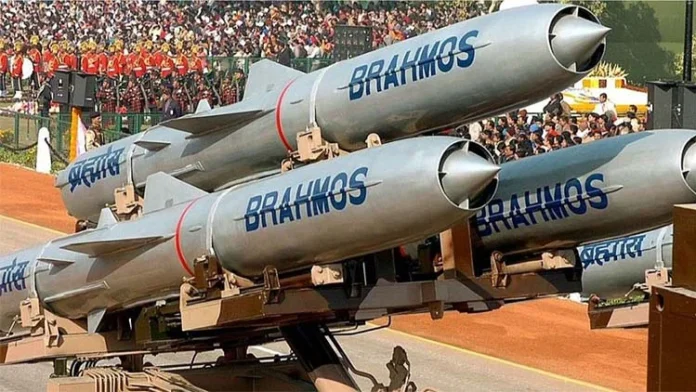India has one of the largest armed forces in the world, with a strength of over 14.4 lakhs (1.44 million) active personnel, since it has the longest unsettled borders with two nuclear-powered neighbours. It also has high defence spending for the operational readiness of such a large force. Hence, the Indian defence budget is the third largest next to the USA and China, though they are far ahead.
Undoubtedly, the defence and aerospace industry are strategically important sectors in India. India is the second largest importer of military hardware making up 8-9 % of global arms imports.
As the nation of 135 crores celebrates the ‘AZAADI KA AMRIT MAHOTSAV” after 75 years of Independence, we find indigenous defence manufacturing scaling new heights. The success stories of India’s Defence Production include shipbuilding (including aircraft carriers), BRAHMOS supersonic missiles, Tejas multi-role fighter aircraft, attack and utility combat helicopters, anti-satellite weapon systems and a wide array of radars, missiles, drones, unarmed combat vehicles and armaments.
VISION STATEMENT
The vision of the government is to achieve a turnover of $25 billion, including exports of $5 billion in Aerospace and Defence by 2025. Over the next 5-7 years, the Government of India plans to spend $130 billion for fleet modernization across all armed services. In line with the self-reliant India initiative, the share of domestic capital procurement, which was set at 64% of the Capital Acquisition Budget of the Defence Services in 2021-22 was increased to 68% for FY 2022-23.
GOVERNMENT INITIATIVE
The Ministry of Defence has also notified three ‘Positive Indigenization lists’ comprising 411 defence types of equipment to be manufactured locally. Additionally, to promote export and liberalize foreign investments FDI in Defence Sector has been enhanced up to 74% through the Automatic Route and 100% by the government route
To give a fillip to the domestic defence industry, the government aims to ensure transparency, predictability and ease of doing business by creating a robust eco-system and forming industry-friendly policies. To this end, the Government has taken steps to bring about de-licensing, de-regulation, export promotion and foreign investment liberalization. The Ministry of Defence has also notified three ‘Positive Indigenization lists’ comprising 411 defence types of equipment to be manufactured locally. Additionally, to promote export and liberalize foreign investments FDI in Defence Sector has been enhanced up to 74% through the Automatic Route and 100% by the government route.
The Government of India’s initiatives are thoroughly evident in the substantial changes introduced in the defence policy framework in 2020, which is now the cornerstone of indigenous manufacturing and value addition. With India also opening its space sector for private and foreign participation, this domain could further help in establishing long-term opportunities and partnerships, capitalizing on the synergies between defence and space.
In order to provide impetus to self-reliance in defence manufacturing, the Government has modified and simplified the policies of private partnership and defence procurement. The following policy changes are noteworthy-
- Defence Production and Export Promotion Policy (DPEPP 2022) – Ministry of Defence (MoD) has formulated DPEPP 2020 as a guiding document to provide a focused, structured, and significant thrust to the defence production capabilities of the country for self-reliance and exports.
- Defence Acquisition Procedure (DAP 2020) – DAP 2020 aims to empower the Indian domestic industry through the Make in India initiative. It has laid down a strict order of preference for procurements and has adequately included provisions to encourage FDI to establish manufacturing hubs both for import substitution and exports while protecting the interests of Indian domestic industry.
- Strategic Partnership Model- The Defence Acquisition Council (DAC) approved the broad contours of the Strategic Partnership Model (SPM) in its meeting held on May 20, 2017. The policy intends to engage the Indian private sector for manufacturing hi-tech defence equipment in India. It is the establishment of long-term strategic partnerships with qualified Indian industry icons through a transparent and competitive process.
- Re-Organisation of Ordnance Factories. To enhance functional autonomy and efficiency, the Government has recently converted the Ordinance Factories Board (OFB) from a Government Department into 07 Government-owned corporate entities. The objective of this restructuring is to transform Ordnance Factories into productive, and profitable assets, improve expertise in the product range, increase competitiveness, improve quality, enhance cost-efficiency and ensure self-reliance in defence preparedness. The new structure will provide these companies with an incentive to become competitive and explore new opportunities in the market, including exports.
DEFENCE PRODUCTION HUBS
The new policies governing the defence manufacturing sector clearly give out the integral role of Indian manufacturing and value addition for future procurements. One positive outcome from the above is the establishment of two defence corridors: one in Uttar Pradesh and the other in Tamil Nadu. These two corridors will focus on developing indigenous manufacturing capabilities and in turn, become the springboard for all development activities undertaken by the Government in this sector.
- The nodal agency for Uttar Pradesh Defence Industrial Corridor (UPDIC) has signed 69 MOUs with industry leaders, with a potential investment of Rs 10,545 crores. The actual Investment made by the companies in UPDIC amounts to Rs 1,767 crores.
- The nodal agency for Tamil Nadu Defence Industrial Corridor (TNDIC) has arranged investments to the tune of Rs 11,359 crores through MOUs etc., with 42 companies. To date, companies in TNDIC have made investments worth Rs 3,176 crores.
REALIGNMENT OF DEFENCE PROCUREMENT
The Indian Armed Forces modernization plan is based on the development of critical combat capabilities and overcoming obsolescence in core capacities. The incorporation of Artificial Intelligence based weapon platforms has improved the lethality and accuracy of operations. A large number of capital contracts and fast-track procurements worth Rs 47,000 crore from the Indian industry were concluded in 2021–22. The ‘Atmanirbhar’ vision has empowered the Army, Air Force, and Indian Navy to procure diverse equipment and technologies through indigenous sources without compromising operational efficiency.
The capital procurement pattern of the Army is now re-aligned with the ‘Make in India’ initiative. Of the capital acquisition contracts worth approximately Rs 90,000 crores in the last three financial years, approximately 83 % have been signed with the Indian industry. The quantum of contracts that went to domestic units in the past three years has been the highest ever. The Army has processed 256 industry licenses and 366 export licenses in the past three years to boost defence production.
CHALLENGES
The defence production industry faces the following challenges-
- High Dependence on Imports.
- Narrow Private Participation.
- Lack of critical state-of-the-art technology.
- Overlapping jurisdictions between the Ministry of Defence and the Ministry of Industrial Promotion.
- The fragile relationship among R&D institutions, production agencies (public or private) and end-users.
THE WAY AHEAD
There is a silver lining, and defence production has been looking up in the last decade. We can feel proud of the fact that defence exports grew by 334% in the past five years, and India is now exporting defence equipment to over 75 countries. With Government initiatives, the expenditure on defence procurement from foreign sources, which used to be 46% of the overall expenditure, has reduced to 36% in the last four years; i.e., 2018-19 to 2021-22. In 2020-2021, 74% of contracts by the Army were awarded to Indian Vendors, which is praiseworthy. India has around 194 defence tech start-ups building innovative tech solutions to empower and support the country’s defence efforts. The Government of India has set a target of Rs 1.75 lakh crores of defence production by 2025, which includes exports of INR 35,000 crores.
CONCLUSION
‘Atmanirbhar Bharat’ is a ‘feel good’ factor and it makes the nationalistic spirit soar at the outset. The success of Atmanirbhar Bharat will depend much on the right blend of policy implementations to fix the inherent challenges we face. This includes long delays in decision-making, high gestation period in the creation of the defence industrial complex, lack of critical technologies, poor inter-ministry coordination, and certainly, the absence of a level-playing field between the Defence Public Sector Units (DPSUs) and the private sector. India will require complete focus and dedicated sincere efforts in line with the “Nation First” attitude to overcome the inner contradictions of the Atmanirbhar Bharat initiative in the near term so as to reap the best benefits in future.
There are shining examples of exclusive brilliance, and the future seems to be bright, in spite of a sluggish start. The defence industry took a long time to get going, but now, it has started walking. With the right support and initiatives, we will soon find it taking giant strides to glory.
BRAVO!
-The writer is an avid reader and prolific writer. Post retirement, he is a Social Activist, Career Consultant and a Motivational Speaker of repute. He can be contacted at www.majgencpsingh.com





